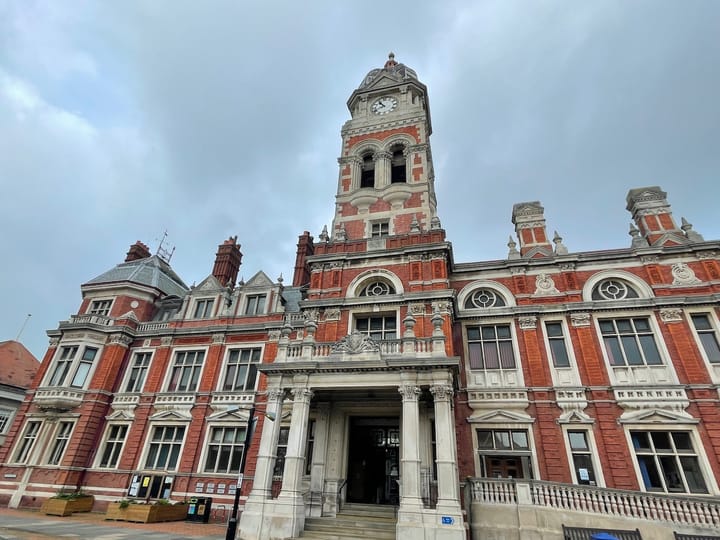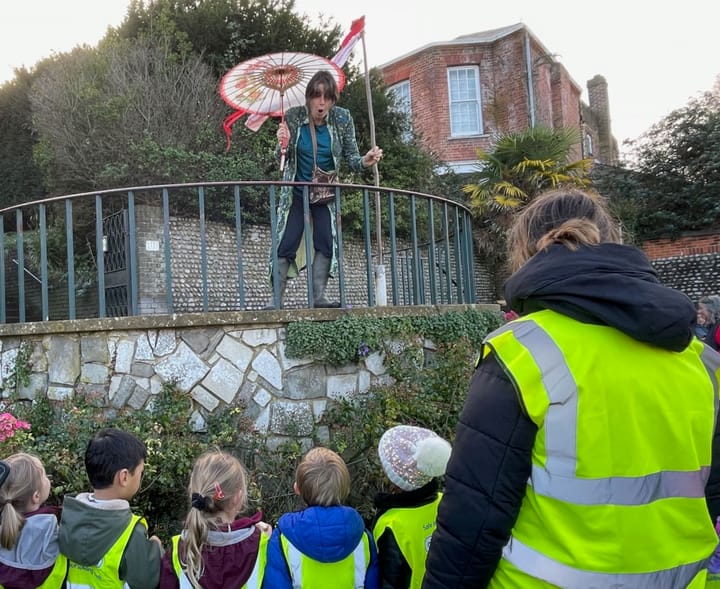How to create a wildlife pond in three hours
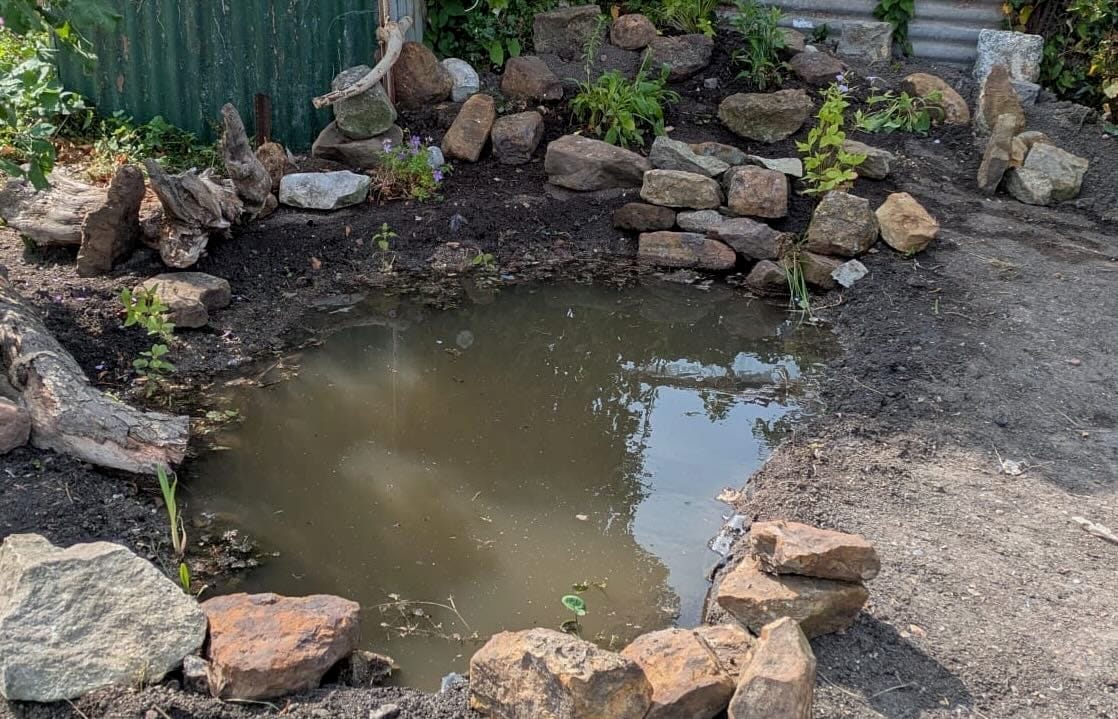
A diverse group of volunteers and wildlife experts – plus a parrot – met recently to dig a pond at the Rooted community allotment in Eastbourne. Volunteer community reporter Liz Magraw explains why and what happened.
Creating natural habitats is key to wildlife gardening and to successful organic growing methods.
After last year’s invasion of slugs and snails, which many gardeners will remember, we wanted to introduce some of their natural predators – frogs.
Rooted Community Food Project promotes food security, resilience and sustainable food systems from plots at Gorringe Road in Eastbourne.
I am a member of this volunteer project, which is a community interest company. I wrote about in a previous article, and we are proud to supply community fridges across the town with fresh produce.
The idea behind the pond was that, besides providing frogs with a home, a pond would encourage other, much-needed biodiversity to the surrounding plots.
It would also use an area where it was difficult to grow vegetables, creating a beautiful feature that celebrated water, the source of all life.
How did we go about it?
With Rooted’s limited funding already allocated, we had to be creative about getting the materials needed.
We were fortunate to find Hailsham-based Watercycle working with the Government-funded Blue Heart project to bring flood awareness and resilience to Eastbourne and south Wealden
Charlotte Still of Watercycle explained that the organisation wanted to start conversations about the hydrological cycle and issues facing water due to human disruption and pollution of it.
She said: “We devise events to learn about water through experience, sharing information, stories, performance and art.
“We bring people together to walk, talk, create and play. Every event is a collaboration and an artwork, a social sculpture: we learn from each other.”
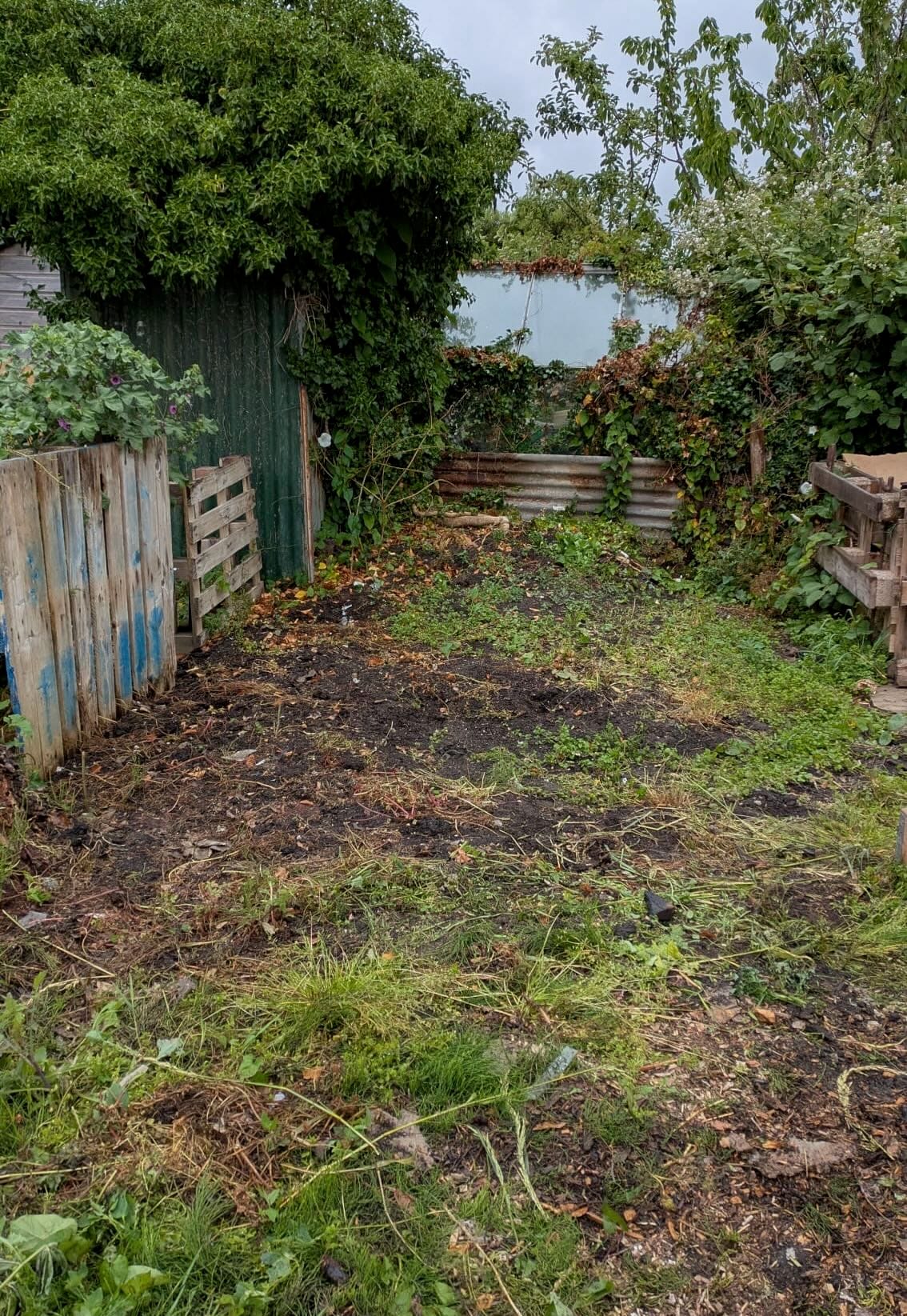
Charlotte and her colleague Clare Whistler examined the proposed site for the pond.
They invited landscape gardener Peter Birchall, known as Pete the Pond, whose ethos is, he explained, to help native wildlife and teach people the importance of ponds and the life that is in them.
Pete, who has his own YouTube channel, said it was also “to help increase biodiversity, to put back balance, love, wellbeing and understanding through helping life”.
He carries out work for Natural England, the National Trust, the South Downs National Park, as well as for councils, conservation groups and private individuals. He teaches in many schools and helps with their wildlife areas.
We set a date for building the pond, invited volunteers and supporters, and told the allotment society's management of our plans.
Who built the pond?
The day came in early June with a severe weather warning but we decided to go ahead and are glad we did: after a couple of showers, the day was perfect.
Rooted volunteers and supporters began to arrive, some with partners and children. Altogether 35 people came and got stuck in.
Supporters and volunteers relished being given an opportunity to be in nature, and make a positive difference to our little portion of the environment.
A lot of the supporters had come to previous Rooted events and wanted their children to have an enjoyable experience learning about nature, their environment and being a part of a community that cares.
We are only custodians; these children are the future.
How did we start?
Pete, who brought his parrot Mango, is hands-on and approachable. He quickly put people at ease, especially the children, and talked about the importance of ponds in supporting bio-diversity and helping with resilient planting.
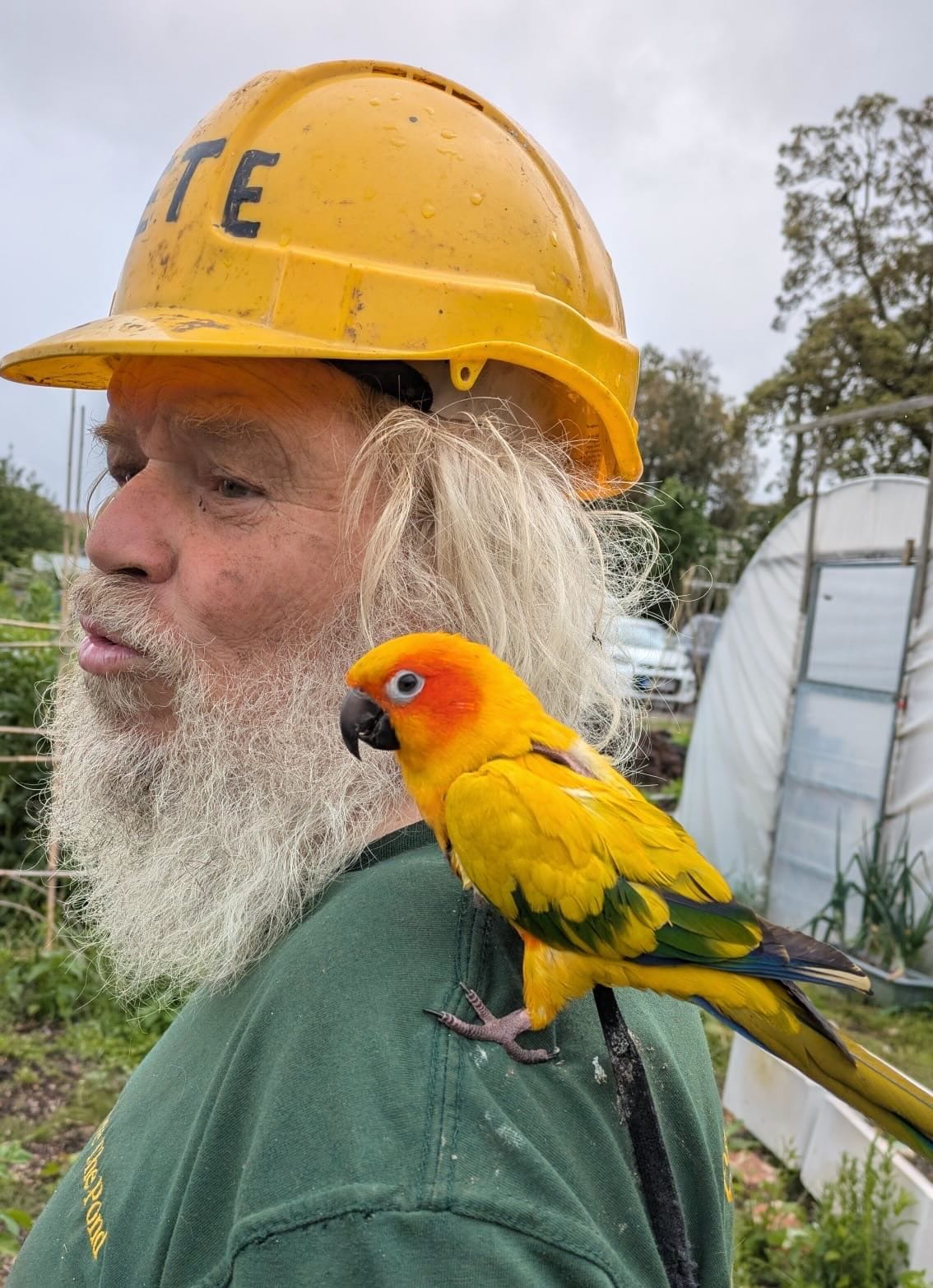
We would only introduce native plants that provided shelter and food for insects, small animals and amphibians. To allow animals access, a pond needs different levels, and the edging must be shaped organically to provide them with entry and exit points.
Pete marked the different levels and there was a flurry of digging, with the children the most enthusiastic.
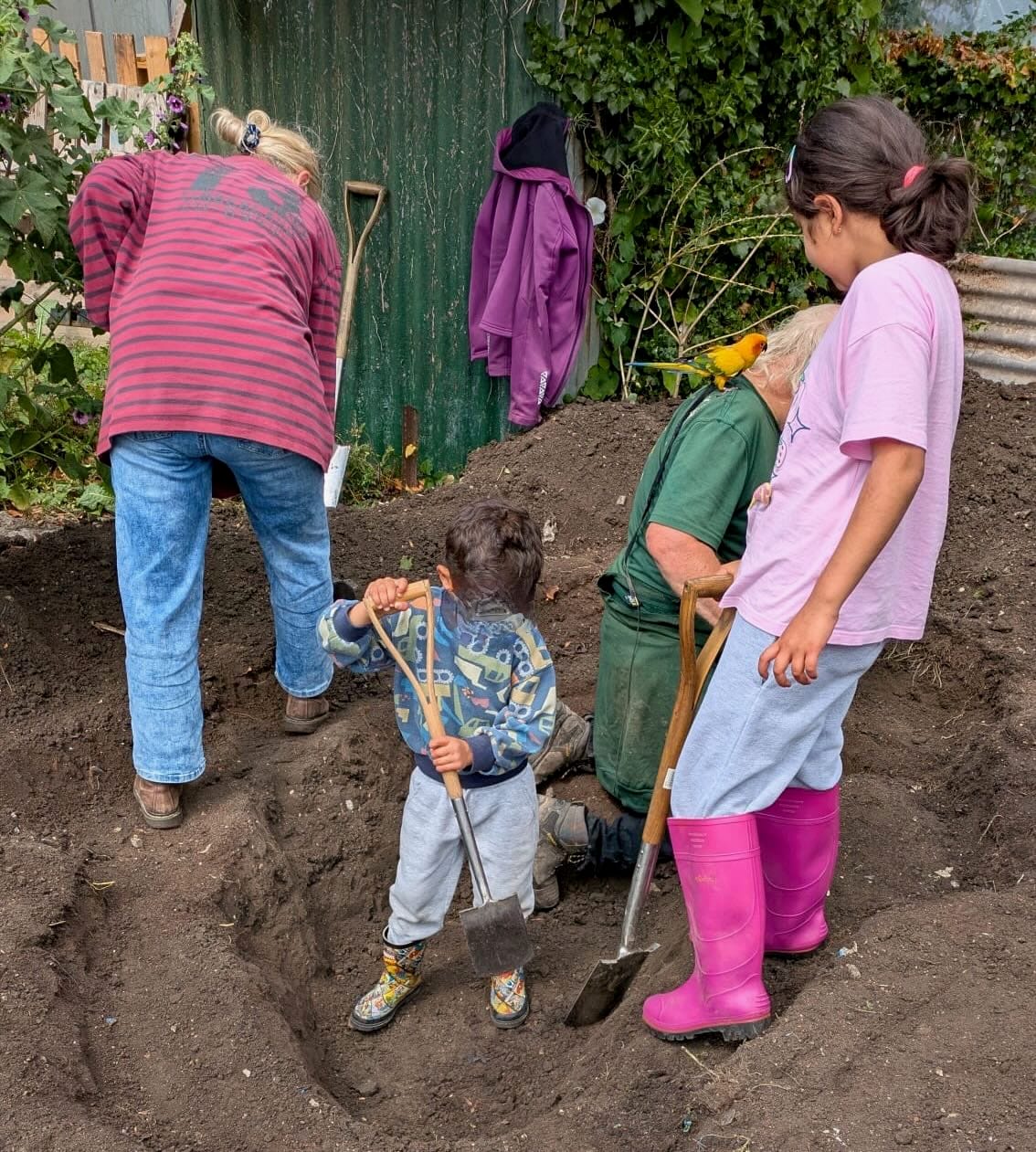
We had laid on activities for the children, but they just wanted to be part of the main event and dug to their hearts’ content!
Once the shape of the pond was dug to 75cm, we put down an underlay to protect the pond liner. This was moulded into shape with enthusiastic stomping.
Bonus birdsong lesson
This incredible and productive morning was enhanced by the presence of Charlie Peverett, of Birdsong Academy, who generously took children and adults for a walk to learn about bird species on the site.
They came across pigeons, jackdaws, herring gulls, goldfinches and black cap warblers among others.
“It's amazing how many songs there are if you know what you're listening to,” said one volunteer. “We were all enchanted, not just by the lovely walk around the site, but also by what we learnt along the way.”
Time to fill it up!
And then the fun really began: filling the pond with water.
Again, the children took the lead with the hosepipe, and the adults were relegated to filling watering cans to help.
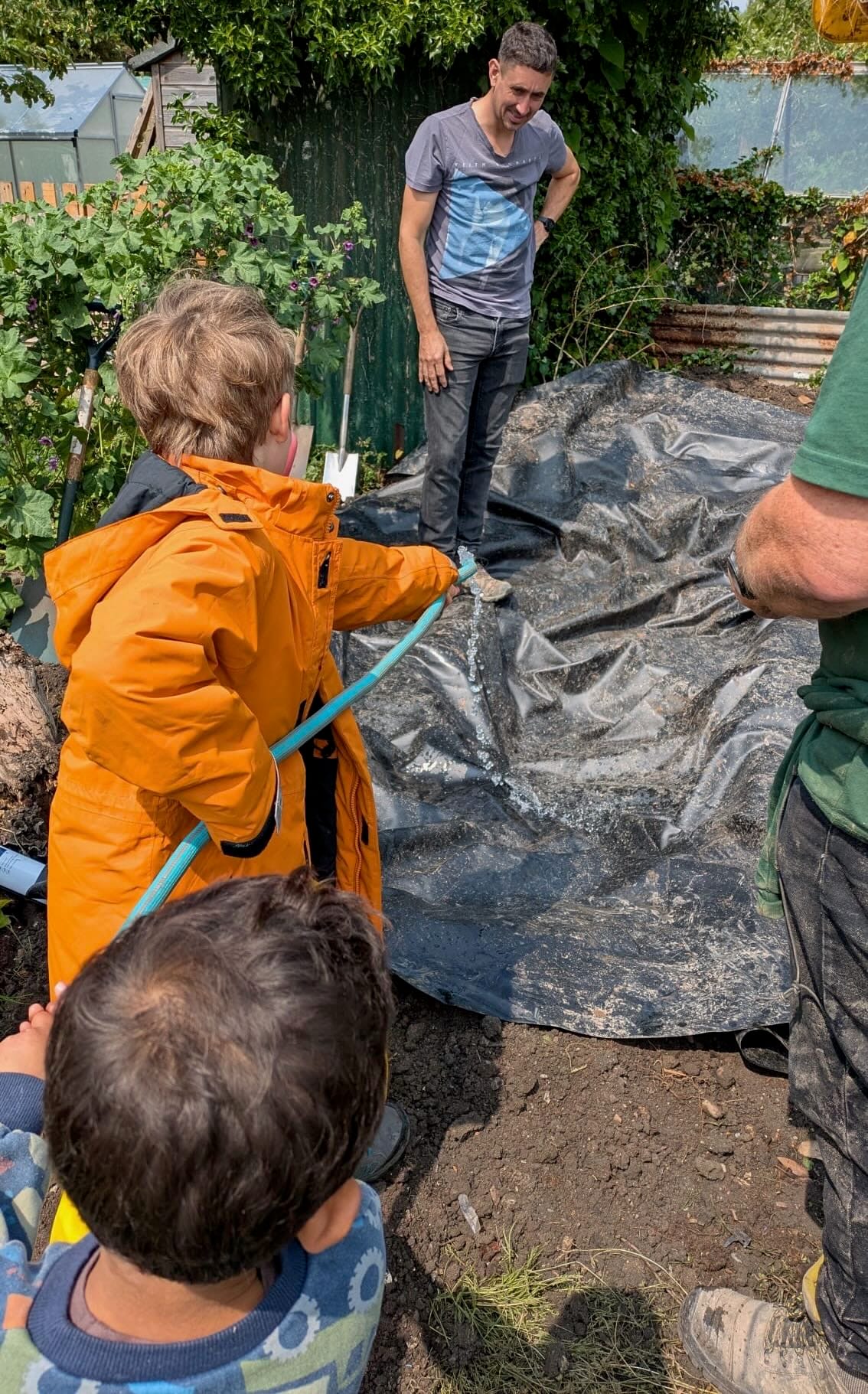
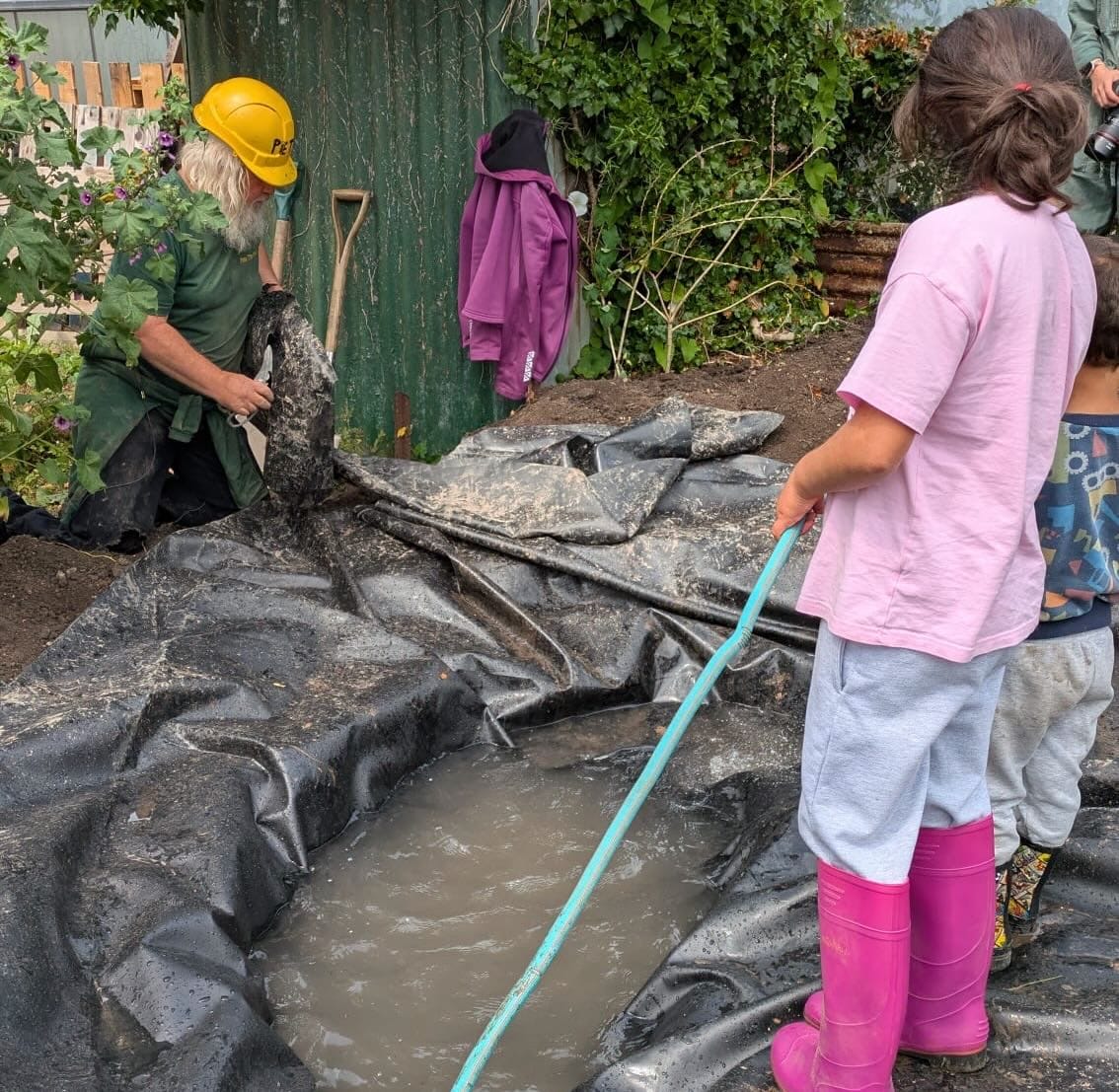
The exciting part - filling the pond! Photo: Liz Magraw
Once the pond was full, Pete cut around the liner, leaving about 50cm around the edge, before showing us how to turn this edge and cover it with soil to create a natural edge.
The magic was starting to happen, with the pond emerging in all its promising beauty.
We added essential elements such as rock piles to create cover for little critters, logs for access and further cover, and then the plants: native aquatic plants that will offer cover, oxygen and beauty to the water.
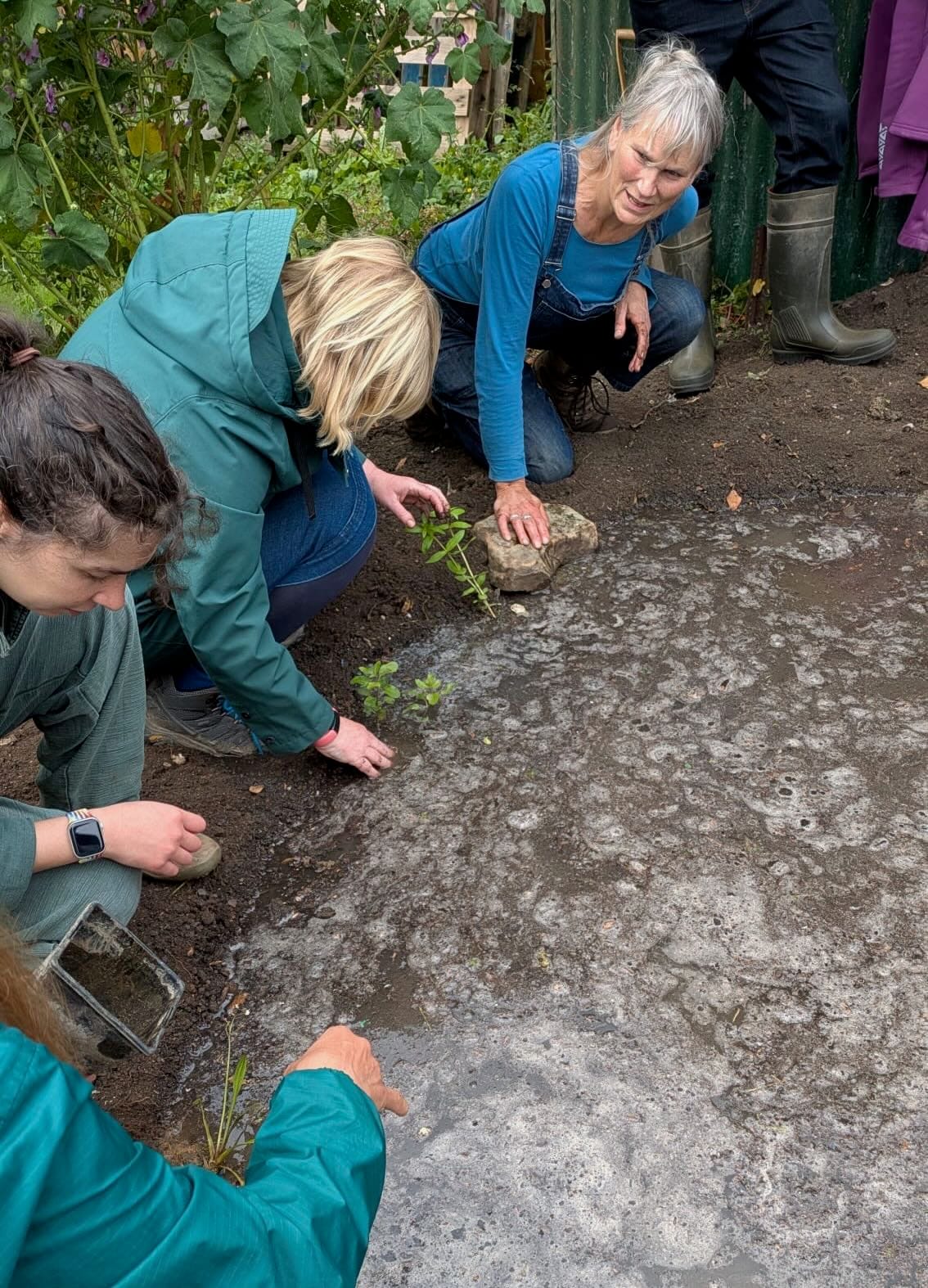
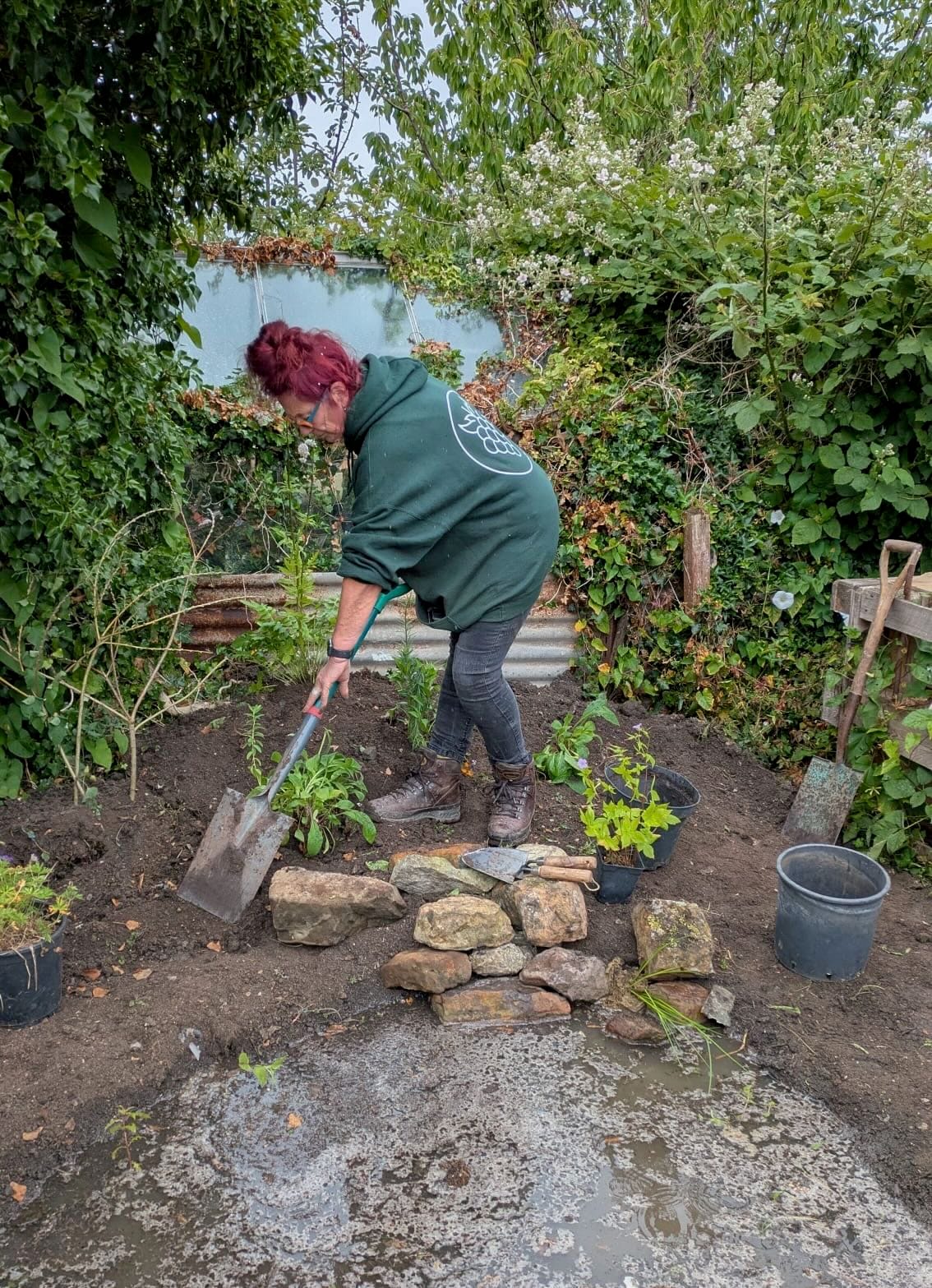
Rocks and plants are arranged around the edge. Photo: Liz Magraw
A volunteer's family donated rocks from their garden and we had the remnants of a tree trunk and some logs from the plot.
The starter plants were donated by Watercycle, and Pete explained the role of each plant: water mint, marsh marigold, marsh plantain, flowering rush, speedwell, brooklime, gypsy wort, purple loose strife, water figwort, and the oxygenator hornwort.
The result
And there it was! In the space of three hours, we had created the most beautiful wildlife pond.
We have seen dragonflies and birds drinking and bathing. A neighbouring allotment holder told us that she had seen frogs inside her polytunnel so, hopefully, they will find their way to the pond.
We have since added more rocks at the back of the pond, as well as native wild flowers which Julia Eldridge, one of Rooted’s directors, and some of the volunteers brought in.
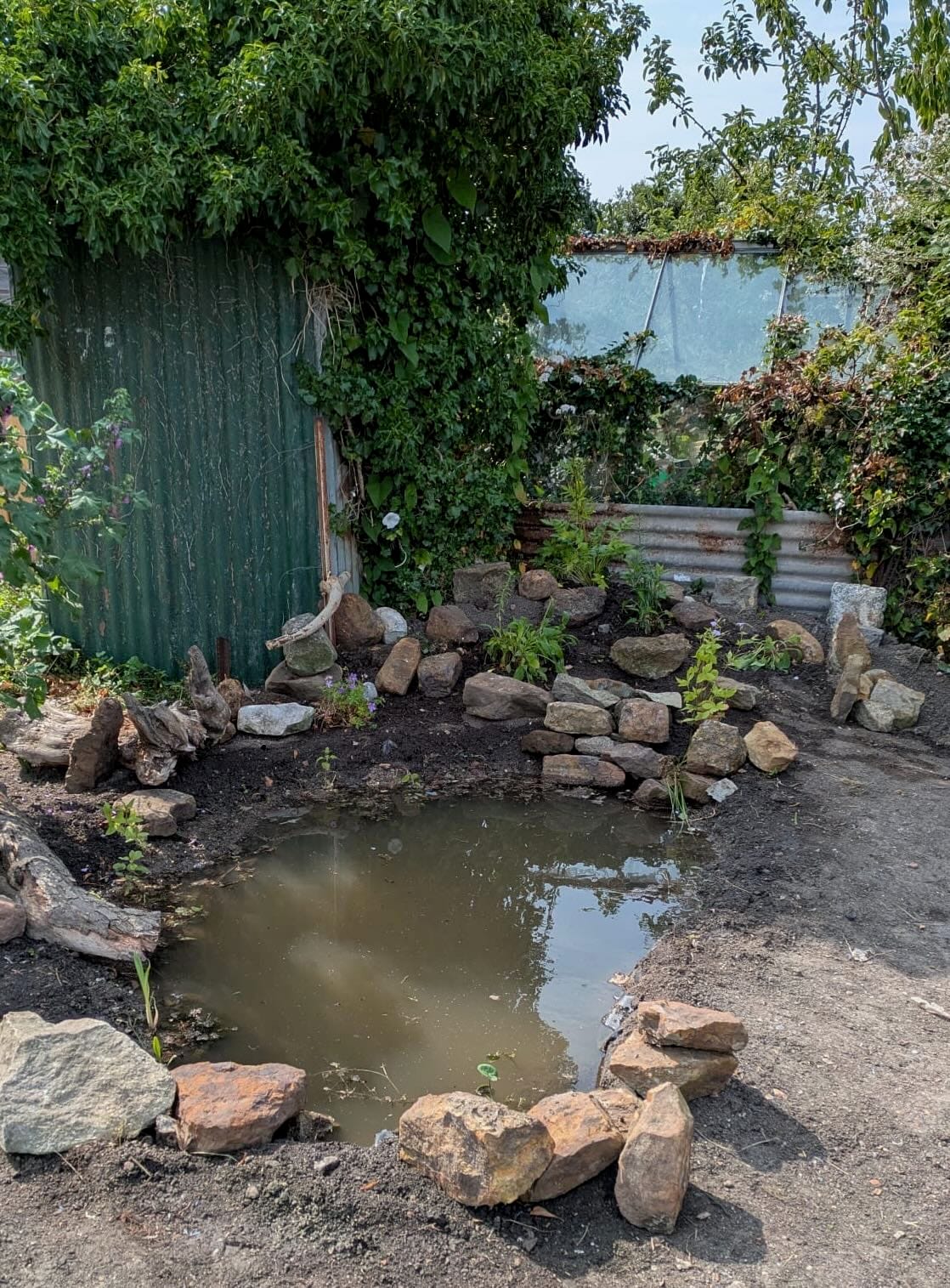
We have added organic watercress from a shop, and it has taken well. We have also created perches for birds and insects.
There is still work to do, like providing acceptable shade with a hawthorn and a hazel tree, again provided by volunteers.
Neither of these native trees will infringe on the ground. The hazel will offer another crop and can be coppiced. We are also considering a scented camomile and thyme strip around the pond, depending on funding or donations – or both.
Our little pond is now taking its place in the grand scheme of nature and playing a part in restoring our natural environment.
Fancy having a go?
If you feel inspired by this adventure, you might ask: what do you need to create a pond?
· A suitable spot
· A generous and informative expert
· Enthusiastic children
· Committed and energetic volunteers
· A little funding: for liner, sub-liner and plants. We were fortunate to have the liner and sub-liner donated by Pete the Pond and some starter plants from Watercycle, who helped make the day possible.
And just watch the magic happen!
:: If you think this type of community reporting is better than reading PR handouts presented as ‘news’, please support us. We are a Community Interest Company and the content is free to read. But need contributions to pay professional journalists to train community writers and edit their features. One-off donations are here or become a member for the price of a coffee a month here.

